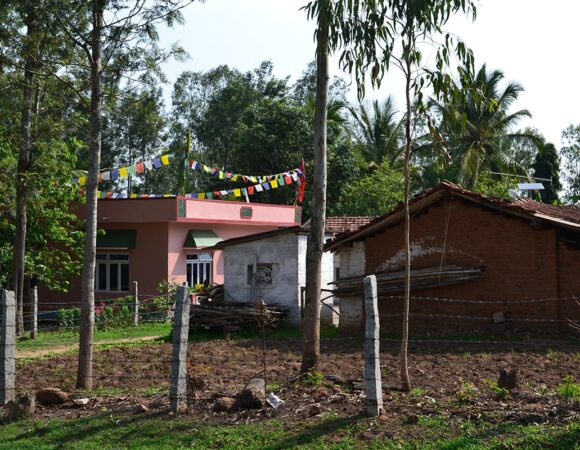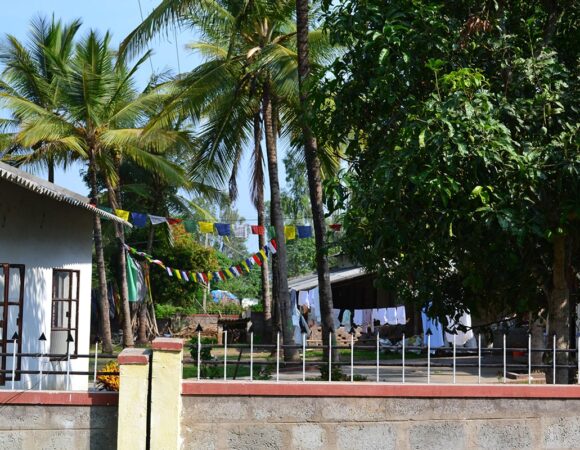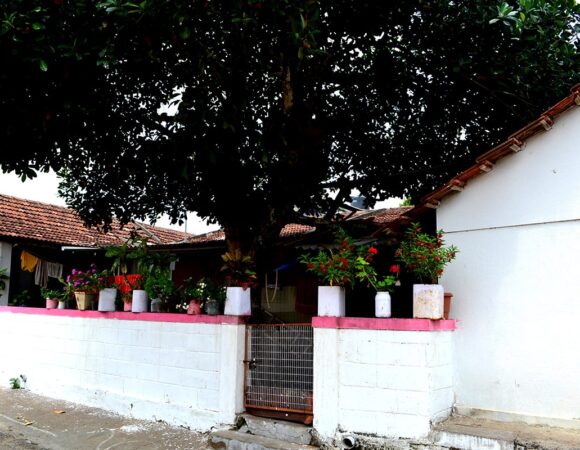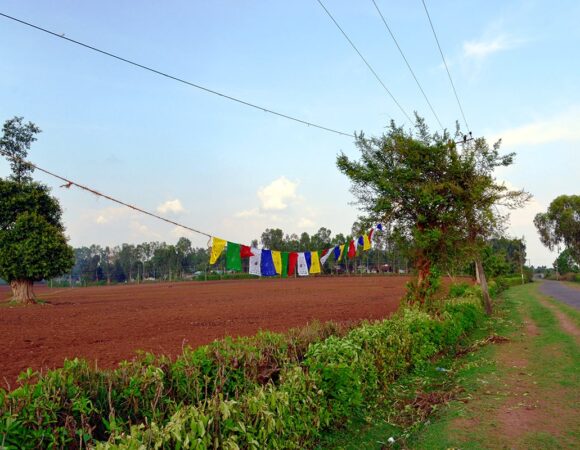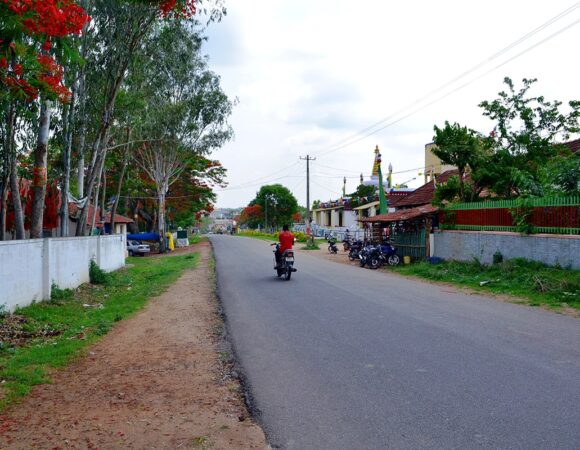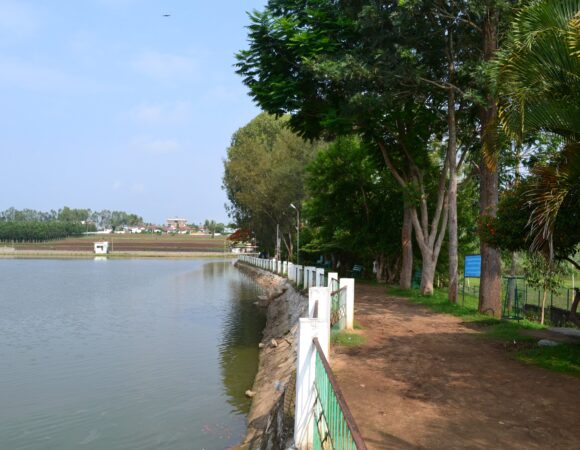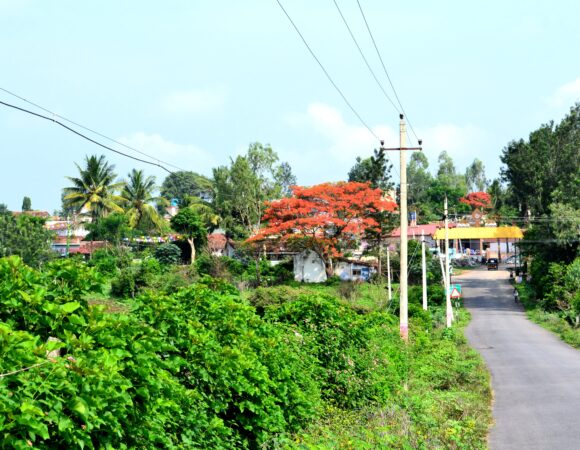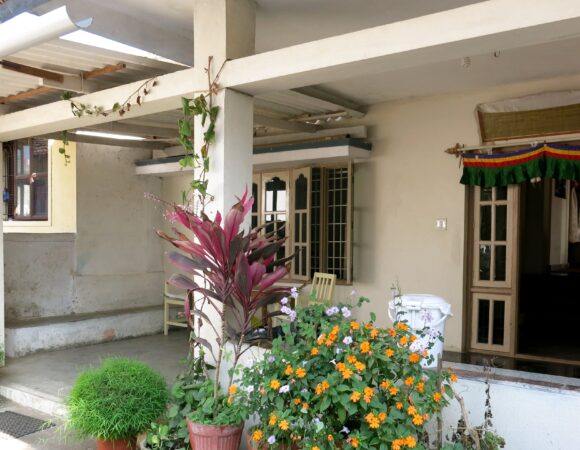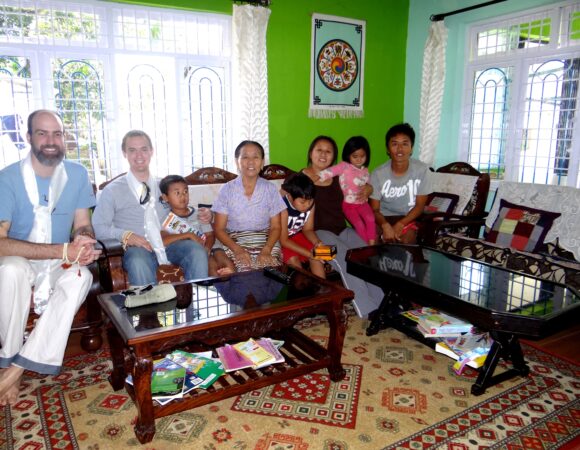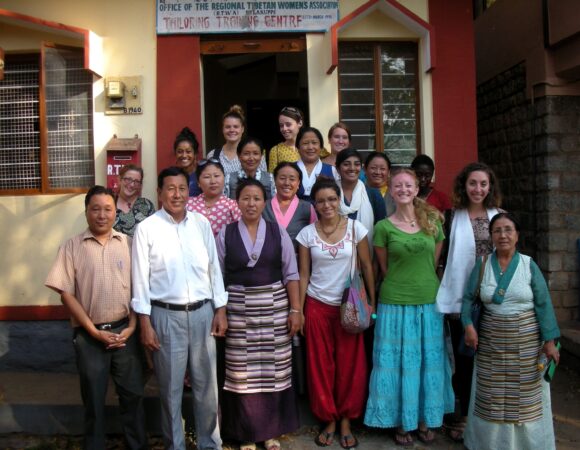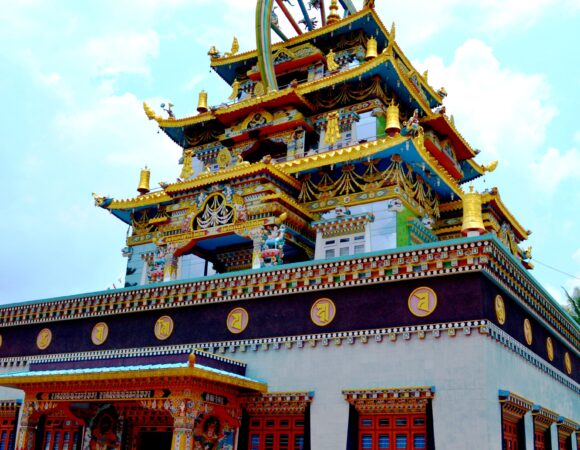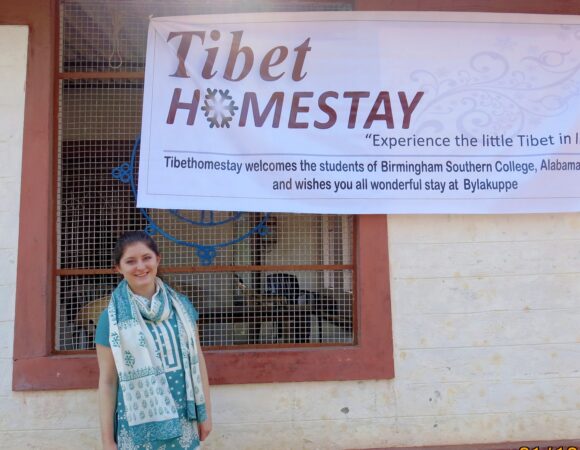- Home
- Bylakuppe
Bylakuppe: Where Tibetan Culture Thrives in India
This haven of Tibetan culture is divided into two settlements, and it's the nearest town, Kushalnagar, in Kodagu, that provides the closest connection to this unique community.
Bylakuppe's Unique Appeal:
A Center of Tibetan Buddhism in South India
Bylakuppe houses over 10,000 Tibetan refugees, living harmoniously in various small camps and agricultural settlements. Here, you'll discover an array of monasteries, nunneries, and temples representing different Tibetan Buddhist traditions. Notable among them are the Sera and Tashilunpo monasteries, both in the Gelukpa tradition, and the Namdroling monastery in the Nyingma tradition. The Golden Temple, a spectacular sight and a major tourist attraction, adds to the area's spiritual allure.
An Oasis of Tibetan Culture
Bylakuppe stands out as the largest and most culturally rich Tibetan settlement in India. However, accessing this cultural haven requires a special permit for foreigners, a process that typically takes 2 to 3 months to clear through the Indian Home Ministry. Once acquired, this pass is valid for a year, granting you the privilege to visit Bylakuppe at any time of the year.
Explore Bylakuppe's Treasures
The Golden Temple is the jewel in Bylakuppe's crown. Inside, you'll encounter a serene world where three magnificent 40-foot Buddha statues—Padmasambhava, Buddha, and Amitayus—watch over the faithful. The temple's walls are adorned with colorful paintings depicting Tibetan Buddhist mythology, and its courtyard comes alive with masked dancers during festivals.
In addition to the Golden Temple, explore the Sera Je Monastery, which plays a vital role in preserving Tibetan Buddhist culture in Bylakuppe. Here, more than 5,000 Buddhists study to become monks. You can also shop for Tibetan jewelry, handicrafts, incense, and souvenirs in the stores around the temple area.
General Information:
Best Times to Visit
Bylakuppe hosts several festivals throughout the year, making these periods ideal for a visit:
- Tibetan New Year in February/March
- Sagadawa, a holy festival, in May/June
- Buddha Jayanthi in June
- Dalai Lama’s birthday on July 6
How to Reach Bylakuppe

A Glimpse into Dickyi Larso Tibetan Settlement, Bylakuppe
Geographic Information
Dickyi Larsoe is situated at an elevation of approximately 1,750 meters (5,742 feet) above sea level. It experiences temperatures ranging from 0°C to 38°C (32°F to 100°F) and an average annual rainfall of 290 mm.
Administrative Setup
The settlement is led by a Settlement Officer, the Representative of the Department of Home, Central Tibetan Administration. This official oversees welfare, administration, and development within the settlement. The Representative's office has made significant contributions, including providing stipends to the elderly, improving healthcare, supporting education, promoting agriculture, and fostering communal harmony.
No. of Villages
Dickyi Larsoe comprises 16 villages, with 14 located within Bylakuppe and two situated off Bylakuppe in Chowkur, 25 km away. Each village has an average of 32 families.
Schools & Education
The settlement prioritizes education for its younger generation to adapt to modern living and to raise awareness about the Tibetan issue worldwide. Schools were established in the settlement to educate Tibetan children. The Central School for Tibetans, Cauvery Valley Project, locally known as CVP School, is administered by the Central Tibetan Schools Administration in New Delhi. It follows the Indian syllabus with Tibetan elements.
Health & Hospital
Dickyi Larsoe has a modern allopathic dispensary and a traditional Tibetan medical clinic to provide healthcare to its residents.
Monasteries
The settlement boasts five monasteries: Sera Monastery, Namdrolling Monastery, Nyingma Monastery, Sakya Monastery, and another Nyingma Monastery. Sera Monastery is the largest, housing nearly 3,000 monks.
Cooperatives
The settlement's Cooperative Society oversees various enterprises, including a flour mill, a carpet weaving center, a poultry farm, an animal husbandry program, a mechanical workshop, and several shops. It also assists farmers in procuring and supplying farm inputs.
Benefits Extended by the Office
The Representative's Office supports the mid-day meals of students, providing nutritious and healthy food. It sponsors Tibetan cultural costumes for dance and music among students, offers trophies, medals, and mementos for sports and extracurricular activities, and runs a hostel for students who come from Chowkur and nearby Tibetan settlements to attend school in Bylakuppe.
A Glimpse into Lugsung Samdupling Tibetan Settlement, Bylakuppe
Settlement Location
Located in Bylakuppe village in Periyapatna Taluk, Karnataka, south India, it's approximately 52 miles west of Mysore City. The nearest town is Kushal Nagar. Lugsung Samdupling sits at 2,600 feet above sea level, experiencing temperatures ranging from 80°F to 95°F and an average annual rainfall of 30-34 inches.
Settlement Population
Initially established with 3,000 settlers, the population has since grown to 10,921.
No. of Villages
Lugsung Samdupling comprises seven villages or camps, each with around 30 families. The distance between settlements ranges from 4 to 6 km.
Settler's Livelihood
Most original families have small agricultural plots, but due to limited irrigation, rain-fed crop agriculture is common. Many settlers engage in trading, run restaurants, operate shops, and sell seasonal sweaters.
Facilities in the Settlement
The Cooperative Society, founded by the settlers, manages various enterprises, including a flour mill, a carpet weaving center, a poultry farm, an animal husbandry program, a mechanical workshop, and several shops. It also supports farmers in procuring and supplying farm inputs.
Schools & Education
Education is crucial to the younger generation's adaptation to modern life and raising awareness of the Tibetan issue. Schools were established in the settlements for Tibetan children. The Tibetan Children Village School was founded in 1984, currently educating 1,040 students. The settlement also has five Central Schools for Tibetans, with the main school offering education up to the +2 level.
Health & Hospital
The settlement has a modern allopathic dispensary and a traditional Tibetan medical clinic to provide healthcare services.
Monasteries
Lugsung Samdupling is home to five monasteries: Sera Monastery, Namdrolling Monastery, Nyingma Monastery, Sakya Monastery, and another Nyingma Monastery. Sera Monastery is the largest, housing around 3,000 monks.
Administrative Setup
The settlement is led by a Settlement Officer appointed by the Central Tibetan Administration in Dharamsala. This officer manages all aspects of welfare and administration, serving as a liaison between the settlement and relevant authorities.
Traveling Mode
The nearest railway station is in Mysore District, 87 km from the settlement, while the nearest airport is Bangalore Airport, 240 km away.

